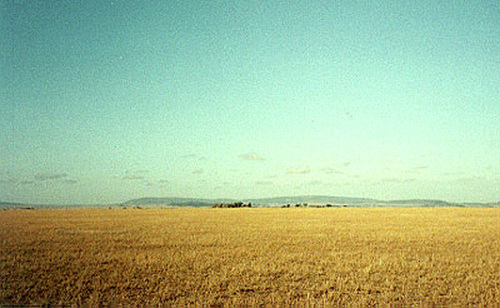African Savanna- Serengeti Plains
Soil Composition

The Serengeti plains have fine nutrient rich volcanic sands that makes up the soils. The volcanic ash produces a soil type called vertisol which supports many plant communities. The eruption of the Kermimasi volcano some 150,000 years ago produced this rich soil. The soil is used mainly for the large amounts of grass that the herbivores such as wildebeests graze on throughout the years. Also, the fact that this is volcanic sand makes it all the more important for the occasional burns necessary to replenish the soil. Fire is a crucial part to this ecosystem's survival. This sustained level of grazing forces the soil composition to be so rich and the nutrients to recycle quickly.
There have been some concern lately, of the shortgrass plains outside the protected Serengeti regions, facing increasing pressure from humans. The humans moving in force more land to be used for farms and ranches, and having cattle graze on the plains instead. The Serengeti also face threats due to unsustainable slash and burn practices by some small scale farmers, which leaves the land infertile.
